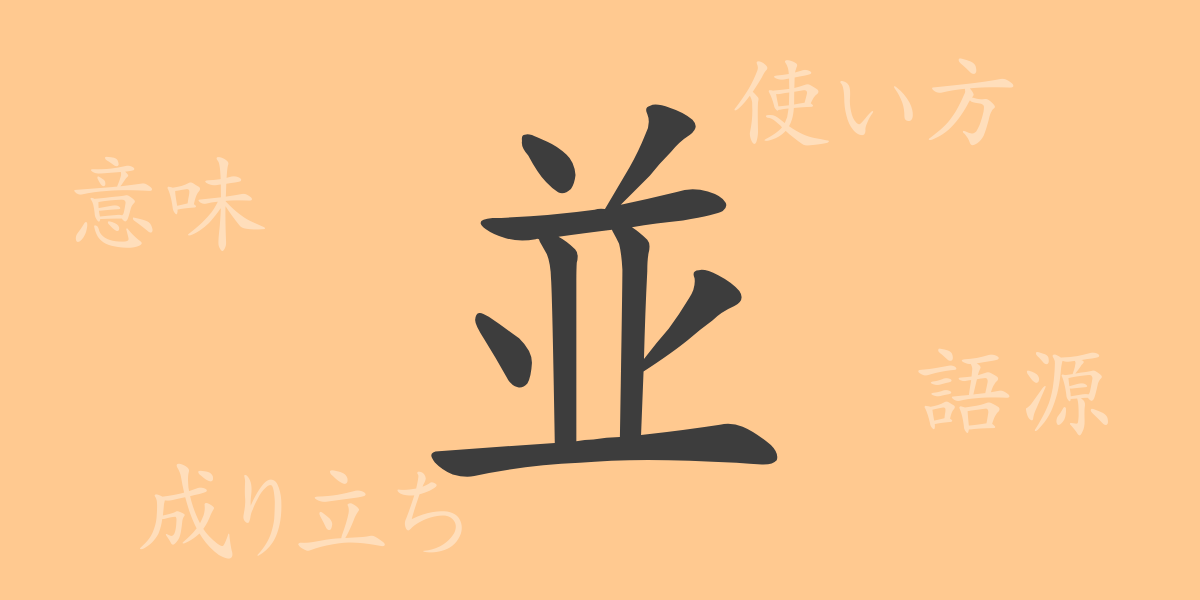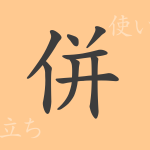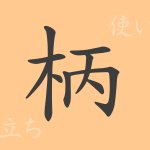The 常用漢字(Jouyou Kanji) “並(nami)” plays a crucial role in the rich expressiveness of the Japanese language. Naturally used in daily conversations and texts, this kanji, as its form suggests, represents the act of arranging things equally. However, the meaning of “並(nami)” extends beyond this, encompassing a wide range of uses. This article delves into the origins of “並(nami),” its meanings, usages, readings, and even idiomatic expressions and proverbs that include “並(nami).” We aim to provide knowledge that will help you use “並(nami)” more richly in your daily life.
Origins of 並(nami)
The kanji “並(nami)” traces its roots back to ancient Chinese oracle bone script. Originally, it consisted of the radical for “standing” (立(ritsu)) combined with “儿(er),” which also indicates a standing person. Over time, this evolved into the current form, where two “立(ritsu)” characters stand side by side. This transformation visually represents things being aligned in parallel, thus acquiring the meaning of “to line up.”
Meanings and Usages of 並(nami)
The kanji “並(nami)” primarily means “to line up equally,” “to be parallel,” “ordinary,” and “common.” It is also used as an adverb to indicate an average degree, as in “並みの(nami no)” meaning “average” or “not special.” Furthermore, as a verb “並ぶ(narabu),” it describes the state of objects or people being in a row.
Readings, Stroke Count, and Radical of 並(nami)
The kanji “並(nami)” has various readings in Japanese:
- Readings: In On’yomi (音読み), it is read as “ヘイ(hei)” or “ビョウ(byou),” and in Kun’yomi (訓読み), it is read as “なみ(nami),” “ならびに(narabi ni),” “ならぶ(narabu),” and “ならべる(naraberu).”
- Stroke Count: “並(nami)” has 8 strokes.
- Radical: The radical is “立(ritsu),” but “並(nami)” itself can also be used as a radical.
Idiomatic Expressions, Proverbs, and Phrases Using 並(nami)
There are numerous idiomatic expressions, proverbs, and phrases that include “並(nami),” each contributing to the richness of Japanese expression:
- 並木(namiki): Trees planted in rows, often seen along roads or streets.
- 並行(heikou): The state of two or more things progressing in parallel.
- 並走(heisou): Running side by side with another competitor in a race.
- 並列(heiretsu): Forming a line side by side; also refers to a computer processing method that handles multiple data simultaneously.
- 並大抵(namitai tei): Meaning “ordinary” or “common,” indicating something is average.
- 並みいる(nami iru): Describes a scene where many things or people are crowded together.
Conclusion on 並(nami)
The usage of “並(nami)” in Japanese, as suggested by its form, derives from the concept of arranging things in a line, extending to various meanings. Not only does it indicate alignment, but it also serves as an adverb to denote degree and plays a significant role in idiomatic expressions and proverbs. Understanding and appropriately using “並(nami)” can broaden your expressive range in Japanese. We hope this article will be helpful in your Japanese learning journey.

























